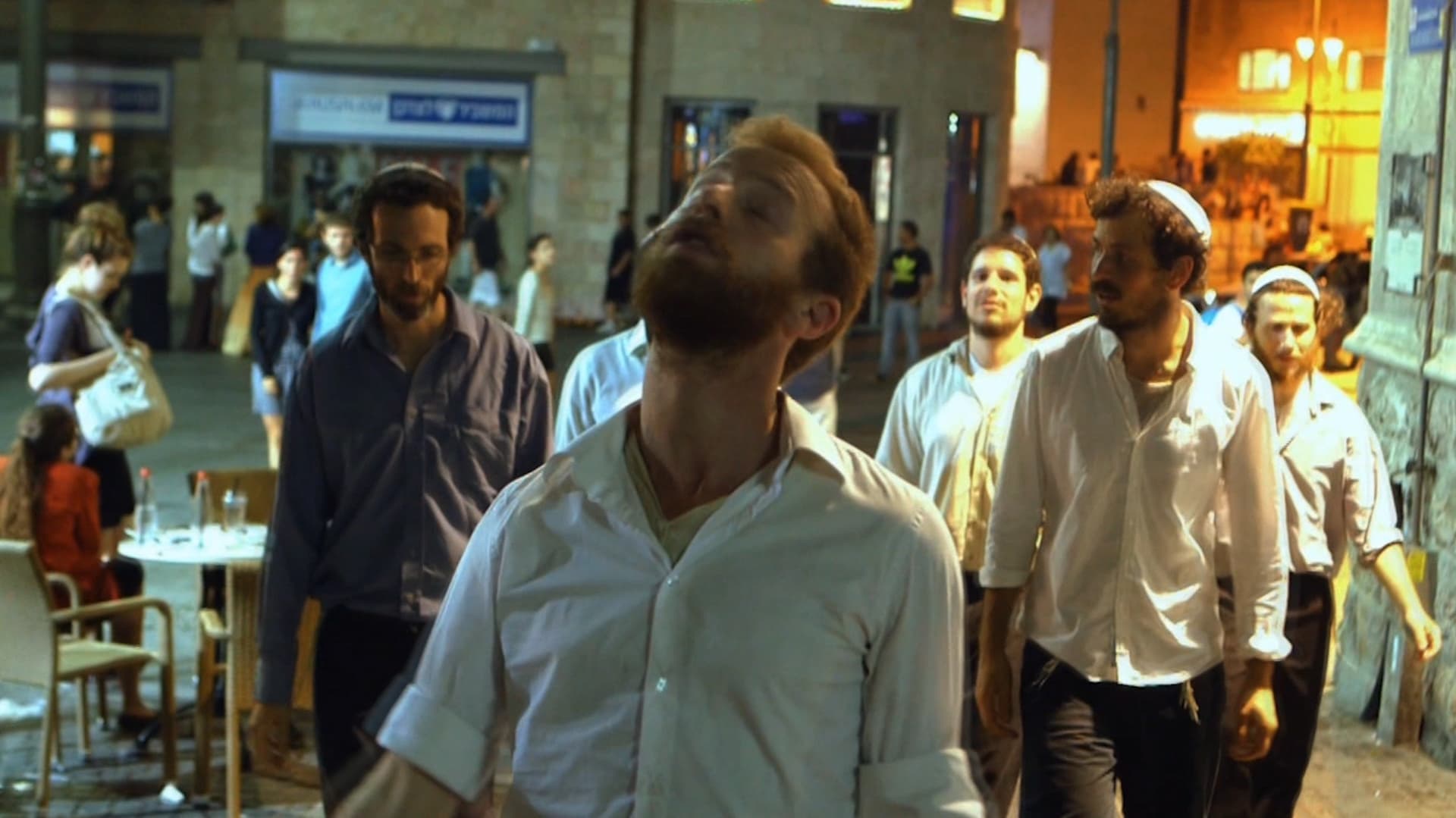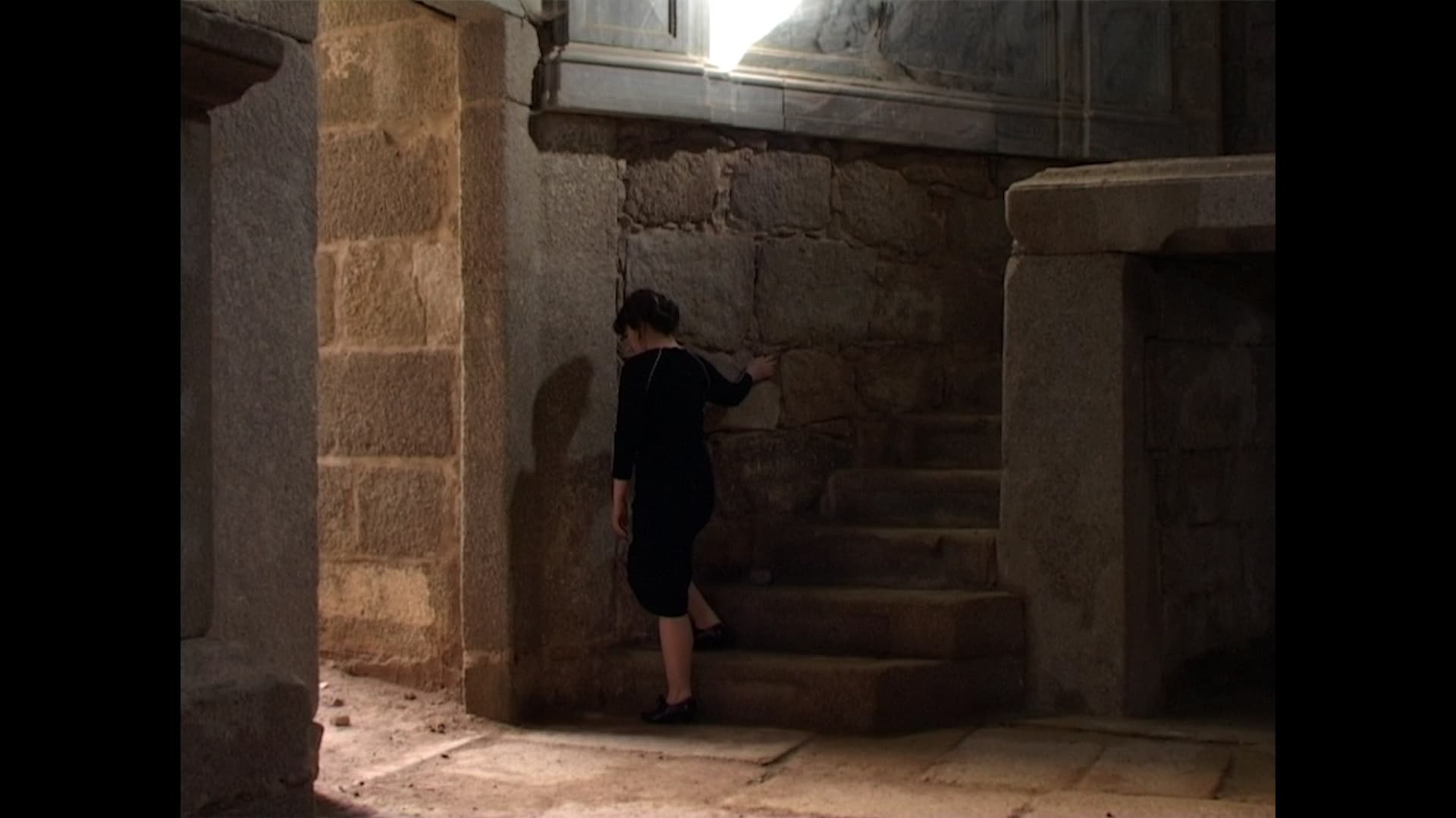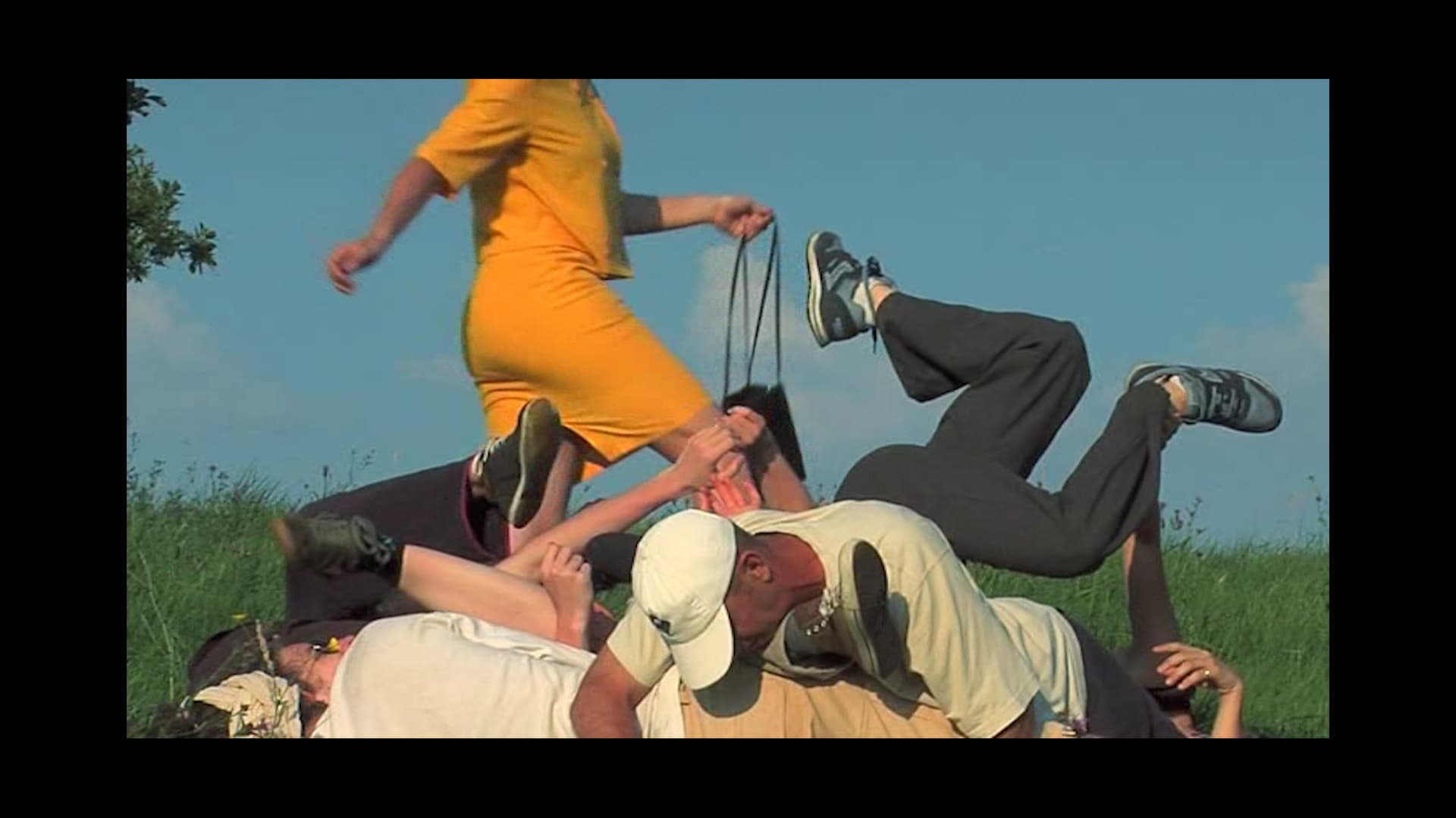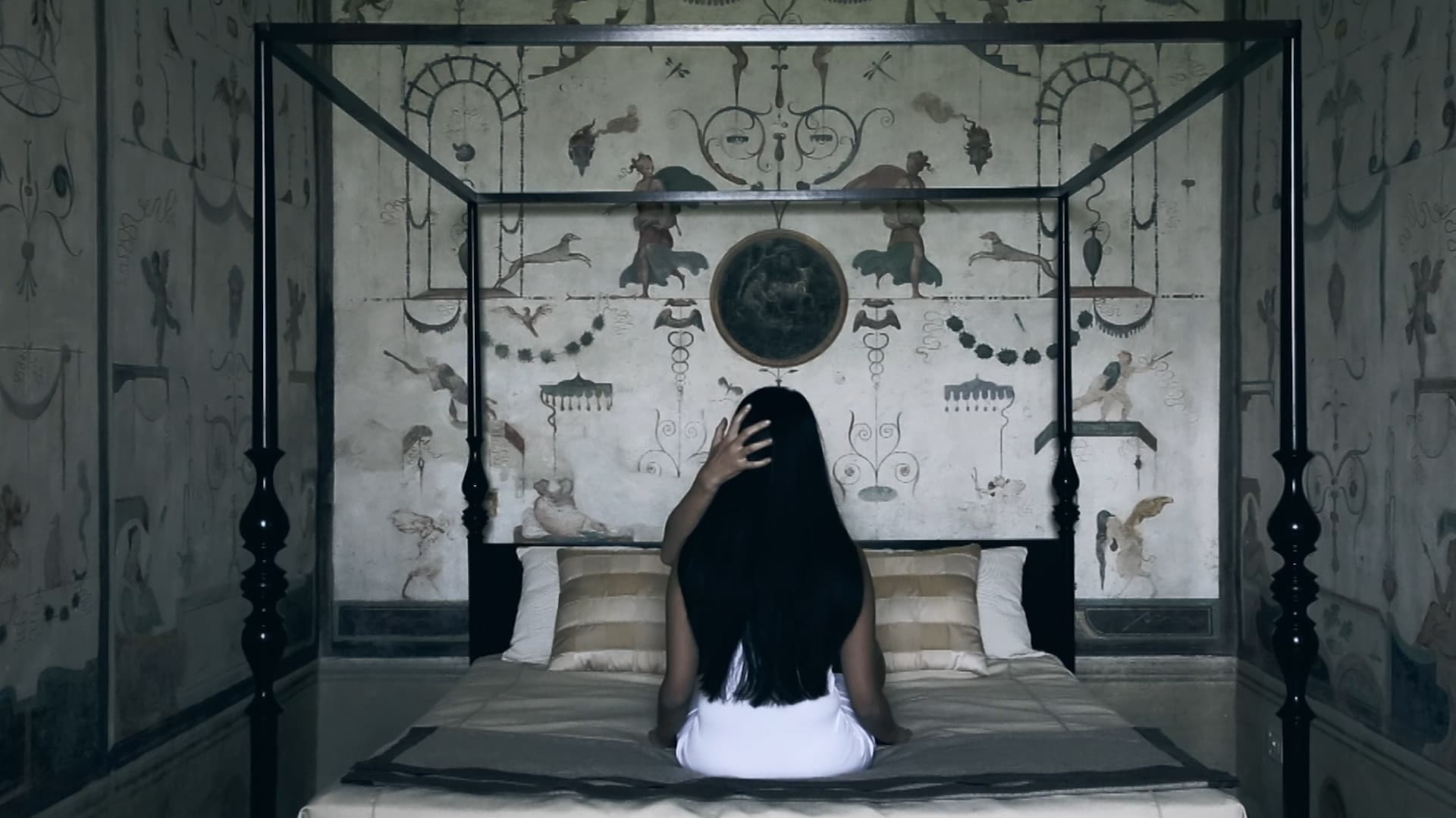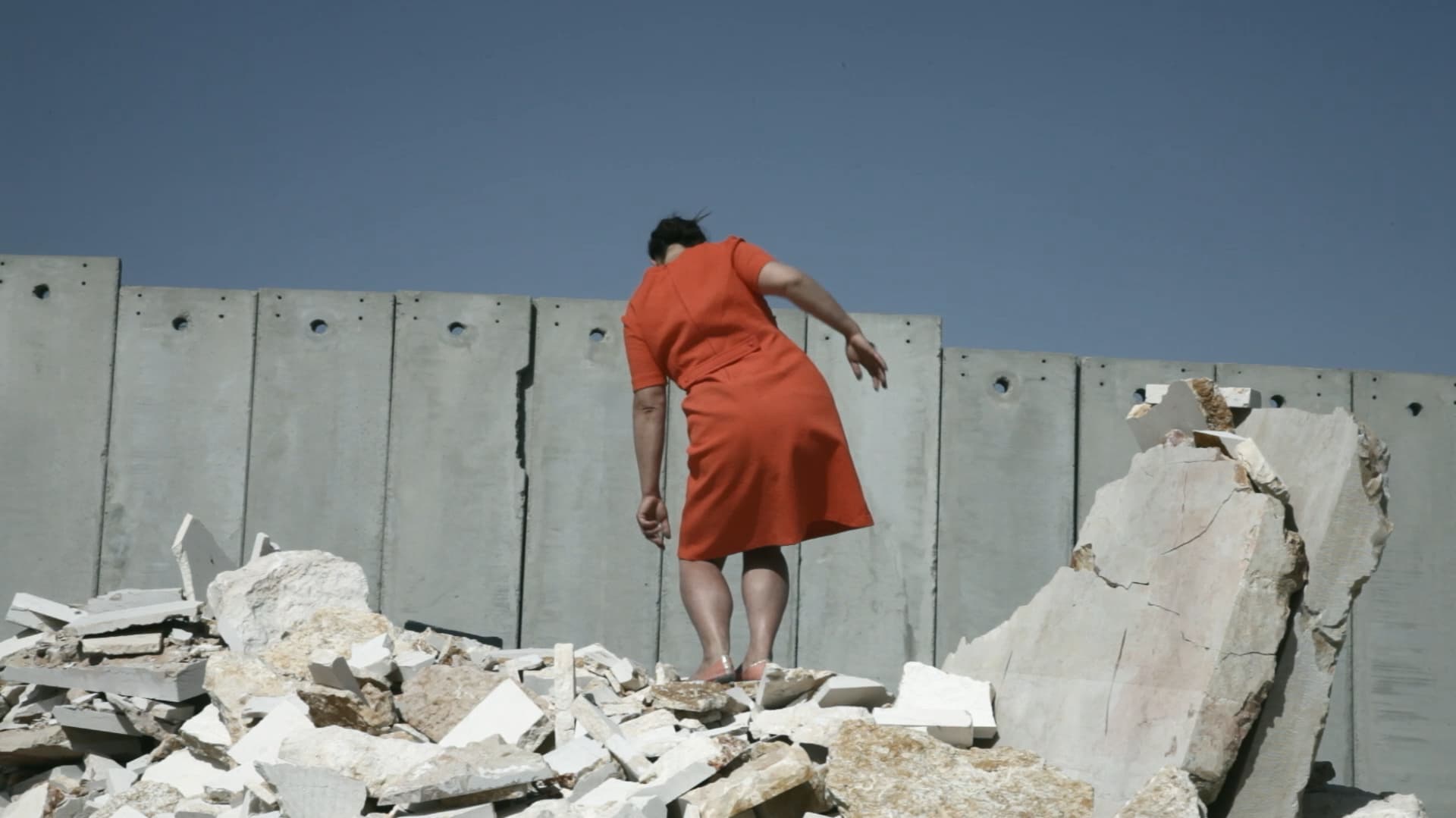TOP > 風景の中で
2020年9月2日(水)21:00〜翌日の昼12:00
風景の中で・5作品
Wed 2 SEP 9:00 P.M.〜12:00 P.M. JST (+UTC9)
Amongst a scenery
City Dance Jerusalem - Kaet ansamble
Highway #1
ハイウェイ #1
6’42
監督:Bettina Fainstein & Lior Har-Lev
振付:Ronen Itshaki
イスラエル 2012
ダンス映画監督たちへのメールインタビュー
A Mail Questionnair to Dance Film Directors
インタビュアー・翻訳:黒田瑞仁
元は「Highway #1」という劇場ダンス作品だったようですね。舞台作品としては、どんな作品だったんですか。振り付けは同じでしたか。
はい。その通りです。実は"Jerusalem city dance projectエルサレム・シティ・ダンス・プロジェクト"の全ての作品が同じな経緯を辿っています。全て既存の振り付けに基づいていて、私たちが課した時間と空間の制約にしたがい場所に適合するよう再編成されています。
映像作品化することで観客に伝わるものとしては何が一番変わったでしょうか。
舞台上で行われるダンス作品を見るのと、屋外の公共空間で行われているダンス作品の映像を見るのとでは、2つの違いがあります。映像では、舞台作品が持ち得ない視覚的な刺激、雰囲気、ストーリー性が加わります。一方、生で行われるダンス作品にも独自の印象があります。
エルサレム市内での撮影だと思いますが、ここがどのような街区でなぜここを選んだのか教えてください。
実はこの場所はエルサレムの中心部、ジャファ通り近くにあります。
私たちがこの場所を選んだのは、宗教的なものと世俗的なもの、芸術的なものと日常的なもの、精神的なものと商業的なものといった、この街の混ざり合った現実を捉えたかったからです。この街、特にこの街区には、これらが全て共存してています。
見物している人や、通りかかる車の前で堂々とダンサーが踊っているのが印象的です。撮影時に、どのくらい周囲の環境をコントロールしたのでしょうか。撮り直しなどはありましたか。
まさにそれこそが私たちの狙いでした。普段は劇場でお金に余裕のある人しか観られないダンス作品をその場に立ち会った全ての人に自由に受け取ってもらおうと思ったんです。このプロジェクトでは原則として、撮影時に現地で起きていることを制御したり、介入したりしないように決めています。映像に偶然が入り込み、作品に影響を与える余地を残しているんです。リテイクは振り付けとカメラワークを変えて何度かしました。振り付けに対応できるようなるべく一回の長回しで行い、一番気に入ったものを編集段階で採用しました。
I found out that this was originally a theatrical dance piece called "Highway #1". Could you explain about it? Where there any changes in the choreography?
Yes. it is correct. Actually this was our general approach to all of the pieces we made for the "Jerusalem city dance project"- They were all based upon existing choreographies that were re-arranged and adapted to be site-specific, meeting the chosen location restrictions and the time frame we dedicated to each one.
What changed the most in what audiences receive from the piece when it was made into a film?
It is two different things to see a dance piece on stage and to watch a video of that piece taking place in an outdoor public space. There is an extra layer of visual stimulation, atmosphere and storytelling that exists in the video and does not exist in theater. On the other hand a live dance piece has its own impact.
I believe the location is somewhere in Jerusalem. Can you tell us where in Jerusalem this is and why you chose that place?
Actually, it is at the very center of Jerusalem city, near Jaffa road. we chose that location because we wanted to try and catch some of the mixed realities that this city holds- the religious and the secular, the artistic and the casual activities, the spiritual and the commercial, etc. All of them co-existing side by side in this city and especially this area.
It's impressive to see the dancers dancing while people watch and cars pass by. How much did you control the surroundings when it was shot? Were there any re-shots necessary?
This is exactly what we were aiming for- bringing a dance piece, usually only seen in theater by people who can afford it, out to the streets to a public space, setting it free and giving it to everybody who happens to be there. As a general rule for this project we decided not to control or intervene with whatever happens in the street when we shoot, so to give a place for chance to play and contribute its share to the video piece. We did take several takes in which we just experimented with different choreography of the camera, which we tried to keep as almost one-shot, in relation to the choreography of the dance. and picked out the one we liked most in the editing stage.
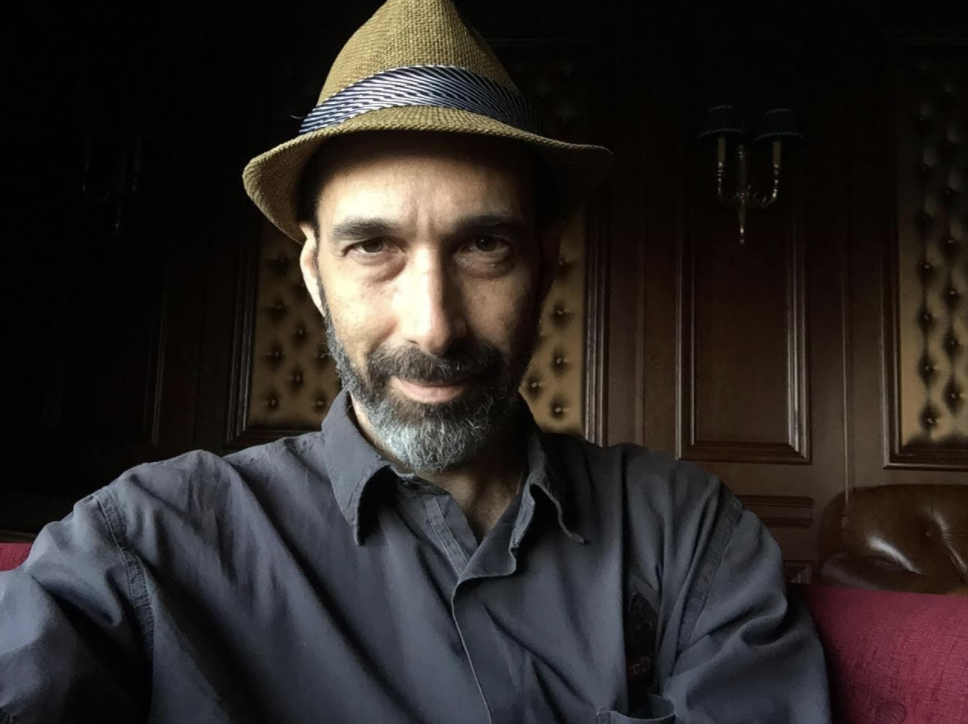
リオル・ハーレヴ
映像作家、アーティスト
イスラエル生まれの映像作家、アーティスト。イスラエル、ハイファのWIZO Canada academy of design WIZOカナダ・アカデミー・オブ・デザイン卒業。
映像作家として20年以上の経験を有し、多分野を手がけるアーティストとして活躍するリオル・ハーレヴの作品は、商業的なものから実験的、メインストリームから最先端でオルタナティブなものまで多岐にわたる。幅広い才能、好奇心と技術から長編映画、短編映画、CM、ミュージックビデオ、ダンス映画、アート映像、VRなど、様々なジャンルの作品を創作している。
映像に関わるアーティストとして、ビデオ、デジタルメディア、インスタレーション、ミックスメディアを用い、その作品は物語と象徴の間で想像世界を創出し、別の現実を立ち上げる。
www.liorharlev.com
LIOR HAR-LEV
Film maker, artist
Israeli born film maker and artist, graduate of WIZO Canada academy of design, Haifa, Israel.
With more than 20 years of experience as a film maker and multidisciplinary artist, Lior Har-Lev works range between the commercial and the experimental, from mainstream to cutting edge alternative. Lior’s multiple creative talents and skills along with his natural curiosity led him to explore and create in many different genres and formats including: a full-length feature film, shorts, commercials, music videos, video dance and art, and VR experiences.
As an artist, working with video, digital media, installations and mixed media, his works shifts between narrative and symbolic, bringing life to imaginative worlds and alternate realities.
www.liorharlev.com
EL CONVENTO
修道院
10’00
監督:ROCÍO FERNÁNDEZ FRAILE
スペイン 2009
ダンス映画監督たちへのメールインタビュー
A Mail Questionnair to Dance Film Directors
インタビュアー・翻訳:黒田瑞仁
古くて立派な建物が舞台のようですが、ここはタイトルの通り修道院だった場所なのでしょうか。この場所について教えてください。
この建物は、マガリアで開催された第4創作ミーティングで「サイレンス・プロジェクト」のような作品を創作するために選出されました。マドリッドの住宅街近くにある古城のような建設途中のままの修道院で、とても美しい場所でした。短いビデオ作品を「サイレンス・プロジェクト」と同じチームで創作しようと決めました。
サイレンス・プロジェクトとは、静寂(サイレンス)とダンス、音楽と映像の対話を双方向型のライブ投影ソフトを使って行った企画です。https://ciabatafurai.wordpress.com/repertorio/el-silencio-proyect/
場所はとても古そうですが、登場する3人の人物はモダンな格好をしているようですし、修道士のようにも見えません。そもそも彼らが人間ですらないような気もします。一体、何者なのでしょうか。
私たちはこの場所に住むとしたらどんな行為をして、どうやって出かけるだろうと考えました。光が窓から差して暗がりを照らすのを見た時、この光を自分の身体に受けて踊ることにしたのです。
映像が二重に重なる手法が印象的で、それ自体がダンスのようだとも思いました。なぜこの手法を採用しようと思ったのですか。
当初の計画ではこのビデオ作品は一つのプロジェクターから丸く投影し、それが回転することで映像そのものが踊るという計画でした。
電子音楽も印象的で、この音楽が場所を踊らせているようでもあります。音楽について教えてください。
ミュージシャンが現場でその場の雰囲気と空気を感じ取りながら、そこが音の空間になるように生で音楽を作ってくれていました。音楽とダンサーとの関係性ももちろん大事ですが、映像と音楽が一つの要素として絡み合うことも非常に重要なことです。
The location seems to be an old building. Was this place a convent as the title suggests? Please tell us about the location.
It was selected at IV Creative Meeting at Magalia to create "The silence project" like director, near Madrid, close to the residential area an old castle, it was this Convent under construction, very beautiful, I decided to make a short Videoart there with the same team and we made "El Convento"
The Silence Project is a conversation about what is silence between dance, music and video with interactive live software
https://ciabatafurai.wordpress.com/repertorio/el-silencio-proyect/
The place looks very old, but the three characters in the film seem to be dressed in modern clothing and don't look like monks or nuns at all. Who are they?
We imagine how it is like to live in that place in the present, and action there and how to go out from there, I saw the light coming in through the window, putting light on the dark space, so I danced receiving this light on my body.
The double-layered images were impressive and the effect seemed like a dance or choreography itself. Why did you use this method?
At the beginning, we create this Videoart to be projected from 1 projector giving a circle vision turning on itself, so the image is dancing also.
Electronic music is also a unique element of this film. Please tell us about the music.
The musician was there also creating live music, taking the feeling and the atmosphere of the place like Sound Space. It is very important that video and music also are one element more at interaction with dancers.
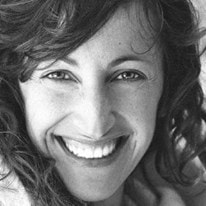
ロシオ・F・フライレ
ダンサー、振付家、映像作家、日本の芸術の専門家(墨絵、紙芝居、苔玉)。
Cía. Bàtáfurai dance(シア・バタフライダンス)とHaru Project: Dance & Media Ibiza(ハル・ダンスプロジェクト:ダンス・アンド・メディア・イビサ)のディレクター。
ビデオ編集を学ぶ。心理学の学位とダンスセラピーの修士号を取得。
4歳からクラシックバレエを習い、9年間スペインのクラシックカンパニーAl-Andalusに9年間所属。20歳からはコンテンポラリーダンスカンパニーのダンサーとアシスタントディレクターをつとめた。
25歳で、バルセロナ、マドリード、ドイツ、タイ、ポルトガル、日本で舞踏とボディウェザー・コンテンポラリーダンスのトレーニングを始める。日本舞踊と盆踊りにといった日本の踊りに加え、上方舞という江戸時代の踊りを学ぶ。
CÍA. BÀTÁFURAI DANCE(シア・バタフライダンス)
2005年にバルセロナでRocío F. Fraile(ロシオ・F・フライレ)によって設立されたカンパニー。ダンスの言語を通じて人間の複雑さを明らかにし、身体と心を統合する方法を繊細で示唆に富むダンスで探っている。
舞踏とボディ・ウェザーの融合。2007年よりバレアレス諸島のイビサ島に本拠地を置く。
https://ciabatafurai.wordpress.com/
ROCÍO F. FRAILE
Dancer, choreographer, Visual artist, specialist at Japanese Arts (Sumie, Kamishibai, Kokedama)
Director of Cía. Bàtáfurai dance and Haru Project: Dance & Media Ibiza
She studied Video edition. Degree in Psychology and Master in Dance Therapy.
She began studying Clásic Ballet at the age of 4 and was part of the Spanish Classic company Al-Andalus for 9 years.Dancer and assistant director of Contemporary Dance companies from 20 years old.
At the age of 25 he began his training in Butô and Body Weather Contemporary Dance in Barcelona, Madrid, Germany, Thailand, Portugal and Japan. Trained in traditional Japanese dances Nihon buyô, Bon o dori and Kamigata-mai from the Edo period.
CÍA. BÀTÁFURAI DANCE
Company created in 2005 in Barcelona by Rocío F. Fraile. It explores and reveals through the language of dance the complexity of the human being, looking for the way to integrate body and mind, from a subtle and suggestive language.
Hybride between Butô dance and Body Weather Company resident in Ibiza, Balearic Islands since 2007.
https://ciabatafurai.wordpress.com/
RURBANISME
ルアーバニズム・田園と都市
12’00
監督:Céline Larrère, Guillaume Gaudart
振付:Céline Larrere
フランス 2008
ダンス映画監督たちへのメールインタビュー
A Mail Questionnair to Dance Film Directors
インタビュアー・翻訳:黒田瑞仁
都市と田舎を重ねる作品はたくさんありますが、この作品に似たものは不思議とないように思いました。もし、あなたが参考にしていたり、何か共通点を思いつく作品があったら教えてください。
褒めていただいてありがとうございます。私がこの映画を作るにあたって考えていたのは人生の一部、まさに私という田舎育ちの女性が大都市に移住した経験でした。間接的に影響を受けた作品はたくさんあると思いますが、何年経った今でもジャック・タチの映画や、アントニオーニの映画「欲望」のテニスをマイムするシーンが心に残っています。行為を文脈から抜き出して、それを似つかわしくない枠組みに再配置するという手法は、開放的な可笑しみをもたらします。
田舎がロケーションですが、あくまで都市を描いた作品だと感じました。どうもトラブルが描かれることが多いですが、都市とはどんな場所でしょうか。具体的に都市名が思い浮かぶなら、それも教えてください。
子供時代を20年間ノロワ・レ・ブール(フランスの東の端)で過ごした私が経験した都市はパリでした。大勢の人の流れに飲み込まれた経験に私は打ちひしがれました。平方キロメートルあたりに17人の住民しかおらず、それよりも野生のイノシシやウシが多くいるような場所から出てきたのに、引っ越したパリの建物には私がでてきた村全体より多くの住人が暮らしていました。私にとって都市とは、ずっと流れが途絶えなくて、人々が泡立って互いに摩擦し合い、沸騰し続けるような場所でした。この飽和が楽しいような恐ろしいような大都市の不安定な狂気を私にもたらしました。
一方で、田舎とはどういう場所なのでしょう。思い出や思い入れはありますか。
私にとっては田舎は都市に対しての(写真用語としての)ネガです。互いに全く逆のものが手に入ったり、手に入らなかったりします。田舎は自分以外の存在(風、空、植物、動物...)とより直接的な関係をもたらしてくれる一方で、情熱を分かち合える人々との出会いは少ないですが、自分とは異なる生き方や視点を持つ人々と出会うことができ、都会とはまるで違った社交性が求められる場所です。
私は森の中の小さな村で育ったので田舎に対しては強い思い入れがあり、パリで約20年間暮らした後で田舎に戻ってきました。(いまは世界一のコムテチーズ産地のポリニーから8キロのジュラ州ル・ヴィゼネに2018年から暮らしています)。
出演者たちについて、彼ら彼女らはダンサーなのでしょうか。どうやって集めましたか。
出演者の一部は有志のダンサーで、一部はフリーのダンサーでしたが、全員が友達です。私は自分の人生の中で彼ら彼女らを見つけました。それが私の仕事仲間を見つけるやり方なんです。もし技術者チームについて同じ質問をもらったとしても、同じ答えを返していました。
There are many works that layer the city and the countryside, but there seemed to be nothing strangely similar to this one. Did you have any pieces that you had in mind when creating this film? Or are there any films or works that you think are similar to this film?
Your question is very flattering, thank you. What I mostly had in mind creating this movie was actually a piece of life, as it was very much rooted in my experience of a countryside girl migrating to a big city. Works that might have indirectly inspired that film are numerous, but years after I still have in mind Jacques Tati's movies and Blow Up tennis pantomime scene (Antonioni) as kind of anchors. The principle of depriving actions of their context and to place them is an unfitting frame permits to open a liberating absurdity.
Even though it's mainly located in the countryside, I felt this was a film that expressed the city. What kind of place is a city for you? Do you have any specific city in mind as a model?
The specific city I experienced for almost 20 years after having spent my childhood in Noroy-le-Bourg (right in the eastern armpit of France) is Paris. Being embedded in such flows of people was very shocking for me. I was coming from a place where there were 17 inhabitants per square kilometer, and many more wild bores and caws, and suddenly there were more people living in my building than in my whole village. City is for me a place of continuous flow, a perpetual boiling matter where people are particles bubbling and frictionning each other. This saturation nourishes for me a kind of ambiguous madness in big cities, which is both wonderful and terrible.
On the other hand, what kind of place is the countryside for you? Do you have memories or attachments to the countryside?
For me, countryside is the negative (in photographic terms) of a city. You get and miss the exact opposites in one or the other. Countryside probably offers a more direct relationship to other beings (wind, sky, vegetals, animals....), less possibilities to gather with people who might have the same obsessions, which corollary permits you to meet people who have very different lives and points of views than yours, a social life wich needs a very different commitment.
I have memories linked to the countryside as I grew up in a small village in the forest, and obviously have strong attachments to it as I moved back to the countryside after almost 20 years in Paris. (I leave now since 2018 in Le Viseney, Jura, 8 km from Poligny, world capital of Comté cheese ;).
About the performers. Are they dancers? How did you find them?
Performers were partly voluntary dancers, partly casual dancers, but all of them were friends ! I found them in my life, which is always the way I find partners to work with. If you would have asked the same question about the technical team, you would have gotten the same answer.
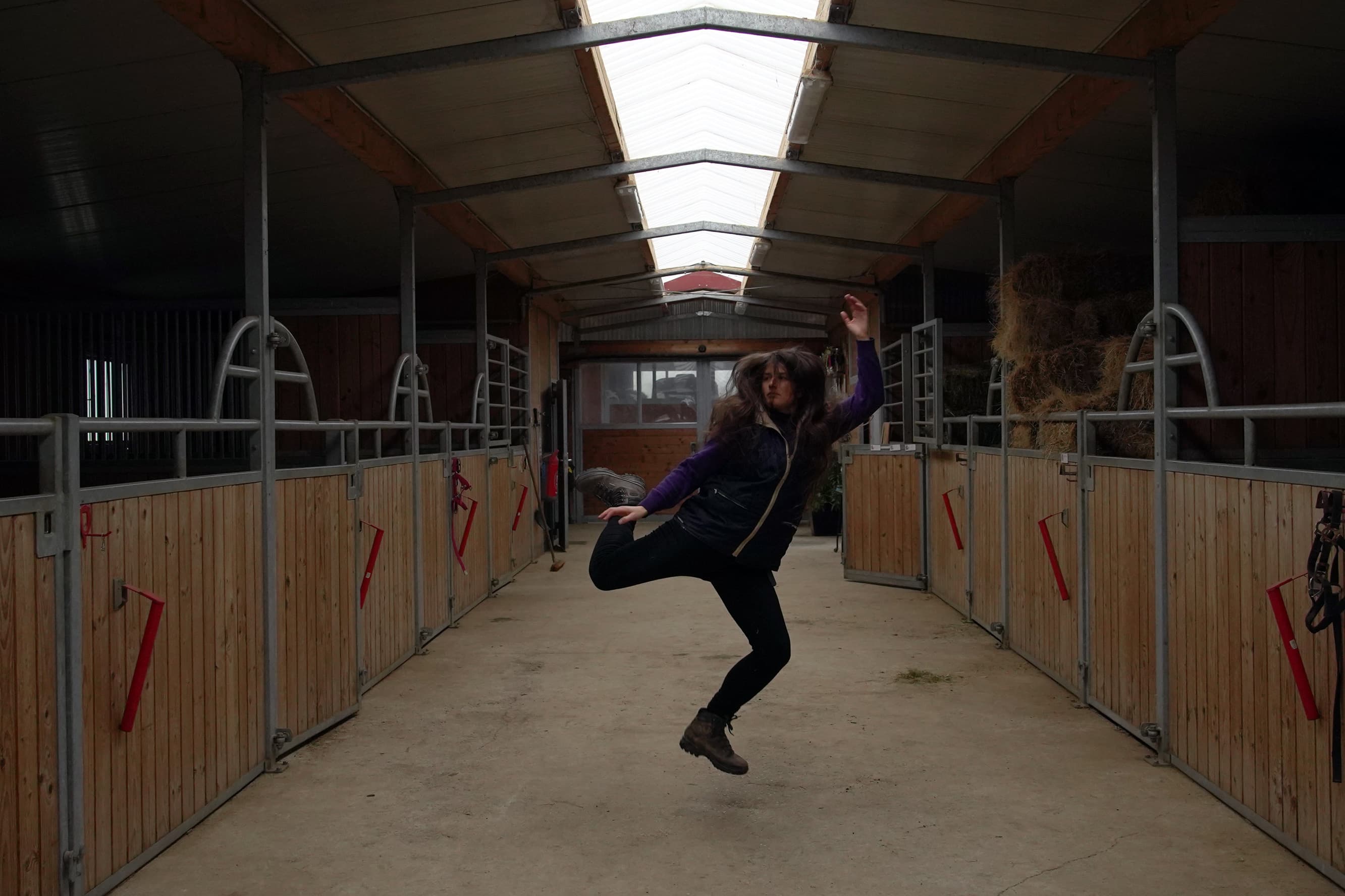
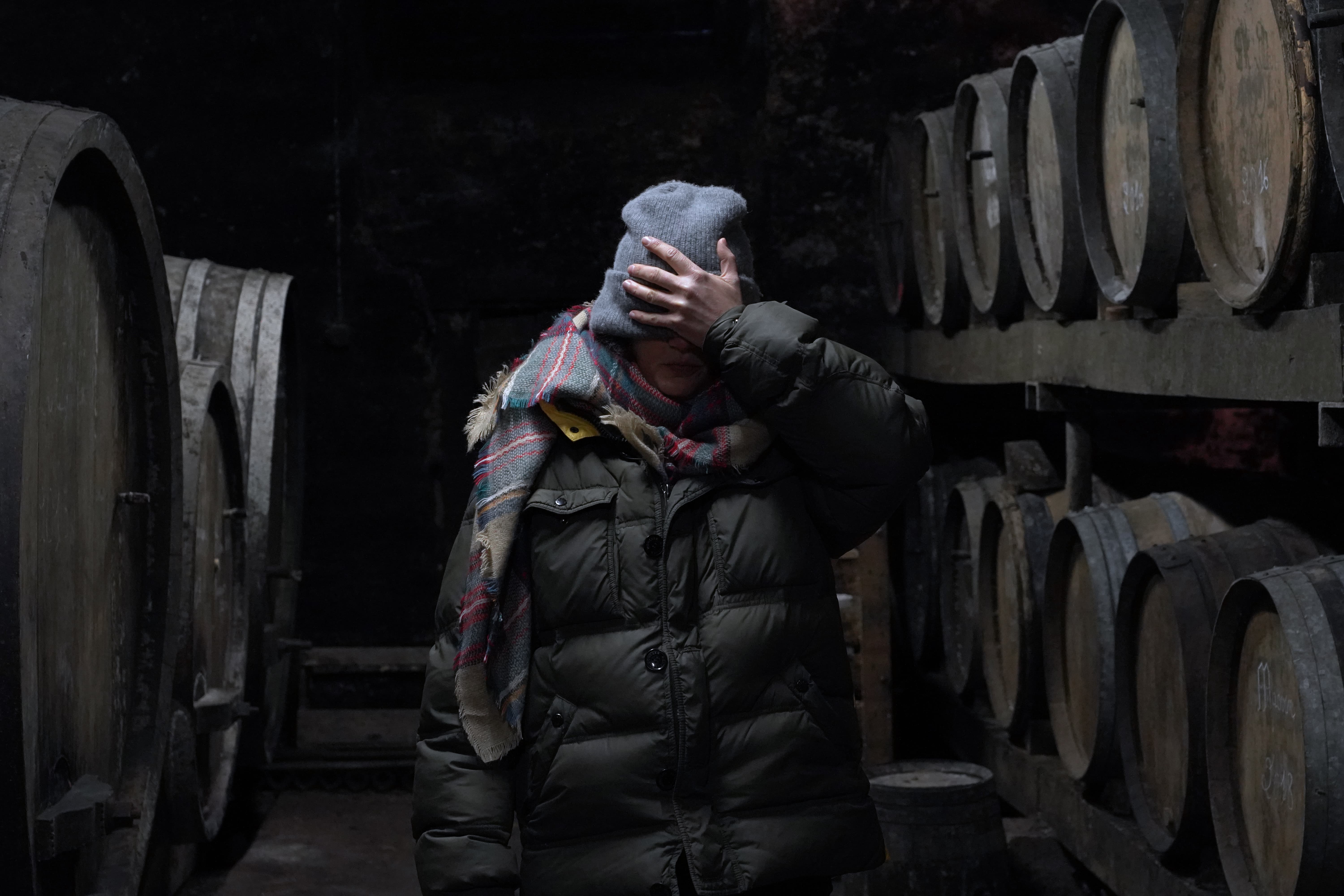
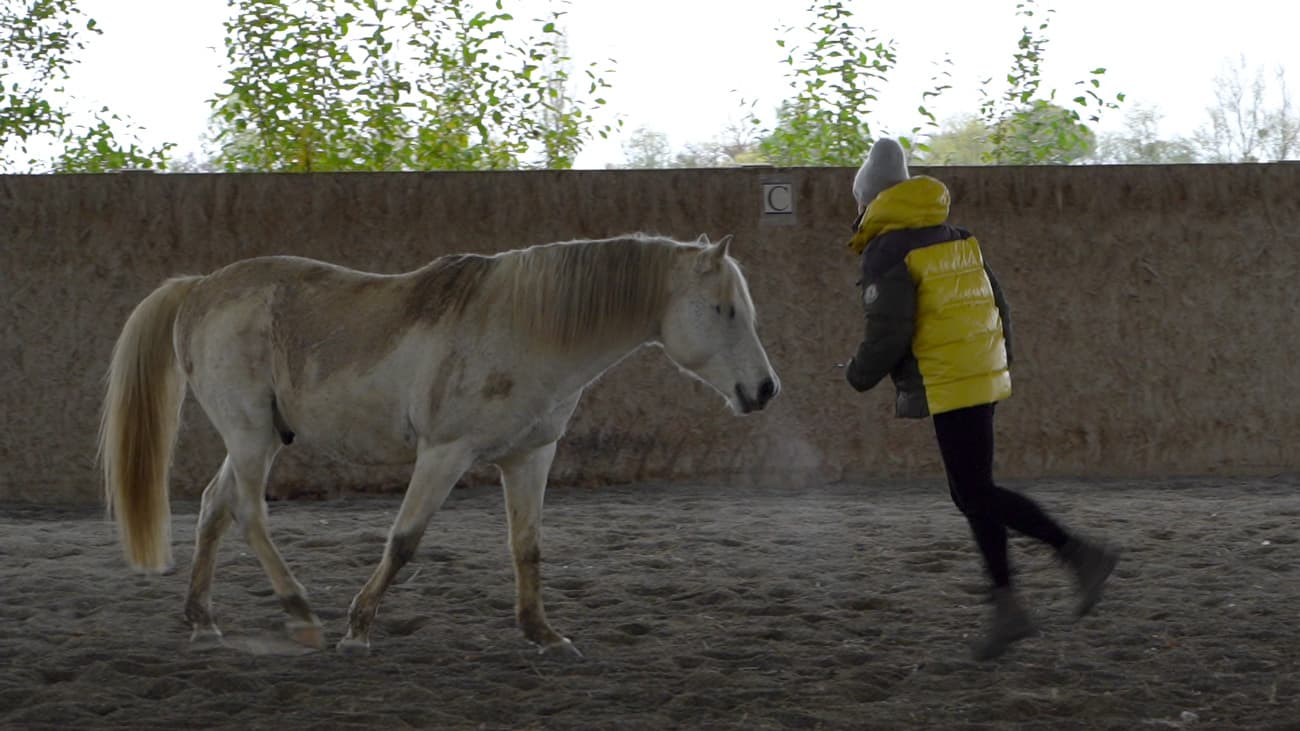
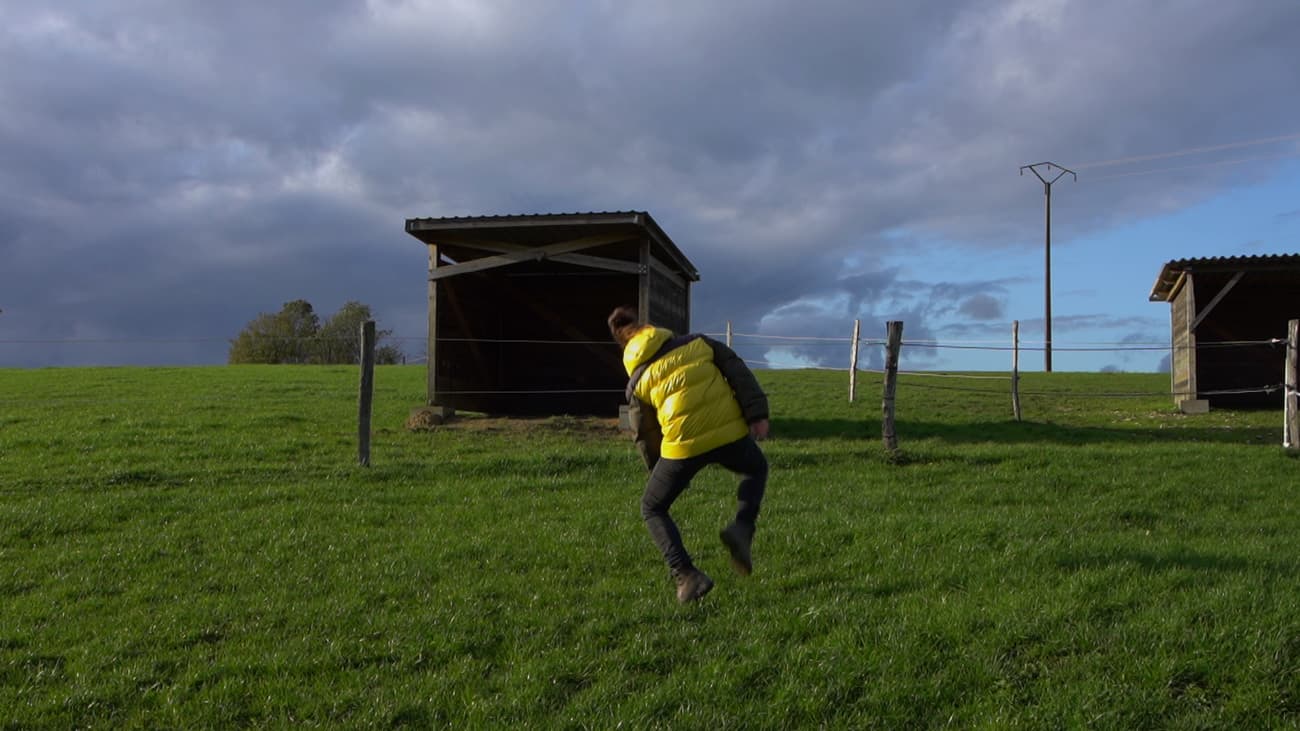
セリーヌ・ラーレ フランス
セリーヌはフランソワ・ミッテランの当選から9ヶ月後にヴスール(フランスの東の端)で生まれた即興家、振付家。身体、声、インスタレーション、写真、文章、料理をソロや共同作業、様々な場所や文脈の中で、様々なメディアを使うことで、動く物体、ダンス音、腐るテキスト、消失するコラージュや、無意味で持続可能な成長パフォーマンスを育てている。20年近くパリに移住していたが現在はコンテチーズの世界首都から10.3km離れたジュラに暮らす。
ここ数年、フランス、バルカン半島、その他ヨーロッパの様々なフェスティバルに出演し、パフォーマンス、演劇、視覚芸術、音楽、ダンス分野のアーティストとのコラボレーションを行っている。彼女はLes Moric(h)éttesレ・モリッツ(Emmanuel Matteエマニュエル・マッテ、Eve Petermannイヴ・ピーターマンとの即興パフォーマンス集団)、Jevtovic & Larrerovic イェーボトビッチ&ラーレボビッチ(カナダ系セルビア人振付家Jana Jevotvicヤナ・イェーボトビッチとのデュオ)、the worst halves of Average Bastards 平均的馬鹿野郎共の最悪な半分(ノルウェー人ミュージシャンJohn Hegre ヨン・ヘーゲレとのデュオ)、Cheval Chamane シュベール・シャマン(フランス人アーティストAnne Vaudreyアン・ヴァドレーとのデュオ)に参加している。
現在は、農家での出会いとパフォーマンスのシリーズ「GRAINS穀物」を展開中で、ダイアン・ソーラン監督による短編映画「IVRAIES挑戦」シリーズも制作予定。
CÉLINE LARRÈRE / FRANCE
Born in Vesoul (eastern armpit of France) 9 months after François Mitterrand’s election, Céline is an improviser and choreographer. She cultivates moving objects, dancing noises, putrefying texts, perishable choreographies, and unreasonable sustainable development performances through various media – body, voice, installation, photography, writing, cooking, in solo or with other people, in different sites and contexts. After having emigrated in Paris for almost 2 decades, she now lives in Jura, 10,3 km away from Comté cheese world’s capital.
Over the past few years she has been performing in various French, Balkan and other European festivals and collaborated with artists from performance, theater, audiovisual, music and dance fields. She is part of Les Moric(h)ettes (improvised performance collective with Emmanuel Matte and Eve Petermann), Jevtovic & Larrerovic (duet with Jana Jevotvic, Canadian-Serbian choreographer), and the worst halves of Average Bastards (duet with the Norwegian musician John Hegre) and Cheval Chamane (duet with the French artist Anne Vaudrey).
She is currently developing GRAINS, a series of encounters and performances at farmers’ places, which will also lead to a series of short films entitled IVRAIES directed by Diane Sorin.
Snags in Palladio
パラディオの朽ち木
6’03
監督:Michele Manzini
振付:Michele Manzini, Barbara Canal
イタリア 2015
ダンス映画監督たちへのメールインタビュー
A Mail Questionnair to Dance Film Directors
インタビュアー・翻訳:黒田瑞仁
まず最初に、あなたについて教えてください。どういう作品を作ってこられましたか?
Michele Manzini : 私は「形象」をつくります。形象というのは形を持つことへの挑戦です。真実が埋め込まれていても、知識として定着する前に華やかなだけで消えてしまう魅惑的な「印象」とは対照的なものです。私の形象は不安定、矛盾、異質といったものを解決することも解消することもなく抱えているので、争いを内包しているといえるでしょう。形象というのは古典哲学を参照すれば「別の考え」を形づくるということです。それは文学的「印象」とコンセプトを貫く思想でもあります。コンセプトの持つ抽象性と、神話や激情や類似や印象の持つ強固さという二つの「不完全な真実」を形態は取り持つのです。ムジールの言うように、形象とはこの二つの世界の中間に潜んでいます。
パラディオを調べたら16世紀のイタリアの建築家だということがわかりました。撮影場所は、彼が設計した建物なのでしょうか?なぜこの場所を選んだのですか?
Michele Manzini : 映画に登場する建築は1546年にアンドレーア・パラディオ(Andrea Palladio)によって設計された祈祷所(Villa Pojana)です。この空間をパラディオは、ある美の理想を信じることで、そのすべてを計算と数学とユークリッド幾何学にもとづく調和関係に目をつけて設計しました。この方法を用いれば偶然、障害、身体を通して知る現実、情熱が入り込む余地はありません。私はそんな場所を扱うことに大変な興味を持ちました。この建築と相容れない部分を持っているかもしれないイメージや、動作、シーケンスをその矛盾を解消も説明もすることもなく、明らかにしたかったのです。
タイトルの意味を教えてください。何がパラディオの「Snags(朽ち木)」なのでしょうか?
Michele Manzini : Snagとは障害の形のひとつです。そして障害こそ私たちが知識を体験することのできる方法の一つなのです。古代より、聡明な存在は身体を持っていませんでした。それは身体を放棄し、プラトンが言うような願望、欲情、要求がもたらす「野蛮な失態」による誤りから距離をとったのです。「いかにして身体とその体験から自由になるべきか?」私の考えではこれは西洋思想に組み込まれ、挑戦され続けてきたものの乗り越えることができていない問題なのです。
映像全体に幾何学的な印象を持ちました。ダンサーやその動きすらもここに巧みに組み込まれていると感じました。人体と振り付けをどのように意図して扱ったのですか?
Michele Manzini : 文章というものを作品を練り上げるための、基礎的な要素として考えています。作品と対峙する前に、まず書かなければいけません。分析もひとつの目的ですが、それは同時に内面や知性の説明でもあります。私はいつも謙虚な気持ちで論理的に書くことをしてきました。もしかするとこれは一般的な方法とは大きく違っているのかもしれません。文章は途中までは必要だけれど後から取り外すことが可能な、建設現場の足場のようなものだと考えています。私の理解では、最後に残るようにできているのは理論ではなく作業です。論理的に書くということが、少なくとも芸術の世界で目的としているのは成果を生むということです。その正しさよりも豊かさが問題なのです。この作品も例外ではありません。作品のために書いた文章は製作に関わった全員と共有し、特にパフォーマーには多様なテーマについて語りました。振り付けを検討しはじめる前に、沢山のミーティングをしました。私たちは一緒に、辿るに値する細い糸をみつけたのです。
あなたが作品を作る時に、ロケーションと向き合うにあたって気をつけていることはありますか?
Michele Manzini : 私の作品はほぼ必ずといっていいほど空間と身体もしくは物体との関係、もしくはそこから読み取れるものを軸に作られています。なので私が使う空間が行き当たりばったりで選ばれるということはなく、私が何を求めているかやどんなテーマを扱いたいかに基づいて慎重に選定されています。
Please tell us about you, and what kind of pieces you have made in the past.
Michele Manzini : I create figures.Figures are an attempt at making a form and which I contrast with the fascination of images which, even though laden with truth, shine and then vanish without becoming knowledge.
My figures contain polemos in themselves, in the sense that they contain in themselves instability, conflict and otherness without dissolving or resolving it.The figure is the process of "another thought" with respect to that of classical philosophy, a thought that passes through literary "images" and concepts and that holds together two "half truths": the greatest abstraction of the concepts and the great strength of myths, unreasoning, analogies, and images.
As Musil has said, the figure dwells between these two worlds.
I found out that Palladio, is an Italian architect of the 16th century. Is the architecture in the film, one of his works? Why did you choose this location?
Michele Manzini : The architecture in the film is that of Villa Pojana, a design by Andrea Palladio dating from 1546.
Palladio constructed those spaces by following an ideal model of beauty that foresaw the use of harmonious relationships completely based on calculations, mathematics, and Euclidian geometry. In this model there is no space for chance, error, or for a knowledge of reality arrived at through the body or the passions. It was for this reason that I was extremely interested in undertaking a work in those places in search of a definition of images, gestures, and sequences that might hold within them a conflict with this architecture, without explaining or resolving it.
Please tell us the meaning of the title. What exactly are ‘snags’?
Michele Manzini : A snag is one of the many forms of error, and error is one of the many ways in which we can experience knowledge. Since antiquity a subject who is knowledgeable is a subject who has no body, who has renounced the body and thus keeps his distance from the errors that, as Plato said, are caused by the "barbaric slush" of our desires, passions, and needs. According to me this has been an insuperable problem in the history of Western thought which has always tried to deal with the same problem: how to be freed from the body and the experience of the body.
Whole of the film had the impression of being beautifully geometrical, even the dancers’ and their moves. How did you direct the human bodies and the choreography in this piece?
Michele Manzini : In elaborating my work the text is a basic element. Before arriving at a completed work I need to face up to writing, and this is both a means of analysis but also of an inner and intellectual clarification. I have always devoted myself to theoretical writings in a humble way and, perhaps, with an approach that is very different from the usual one. I have always considered them as the scaffolding that we use for construction but which afterwards it is convenient to remove. As far as I am concerned, what is destined to remain is not the theory but the work. The judgment that theoretical writing aims for, at least in art, concerns this ability to bear fruit: its fertility rather than its truth. And this work is no exception. I shared the texts of the project with all those who have collaborated with me, in particular with the performers with whom I talked a great deal about various themes. There were very many meetings before beginning the research into gestures. I can say that together we found a slender thread which we could follow.
When you create your works, are there any policies you have on filming locations and how to handle them?
Michele Manzini : My works are almost always constructed on the relationship between space and bodies or objects: on what that relationship can tell me. For this reason, my choice of spaces is never random, but chosen with great attention on the basis of what I am looking for and on the themes I want to work on.
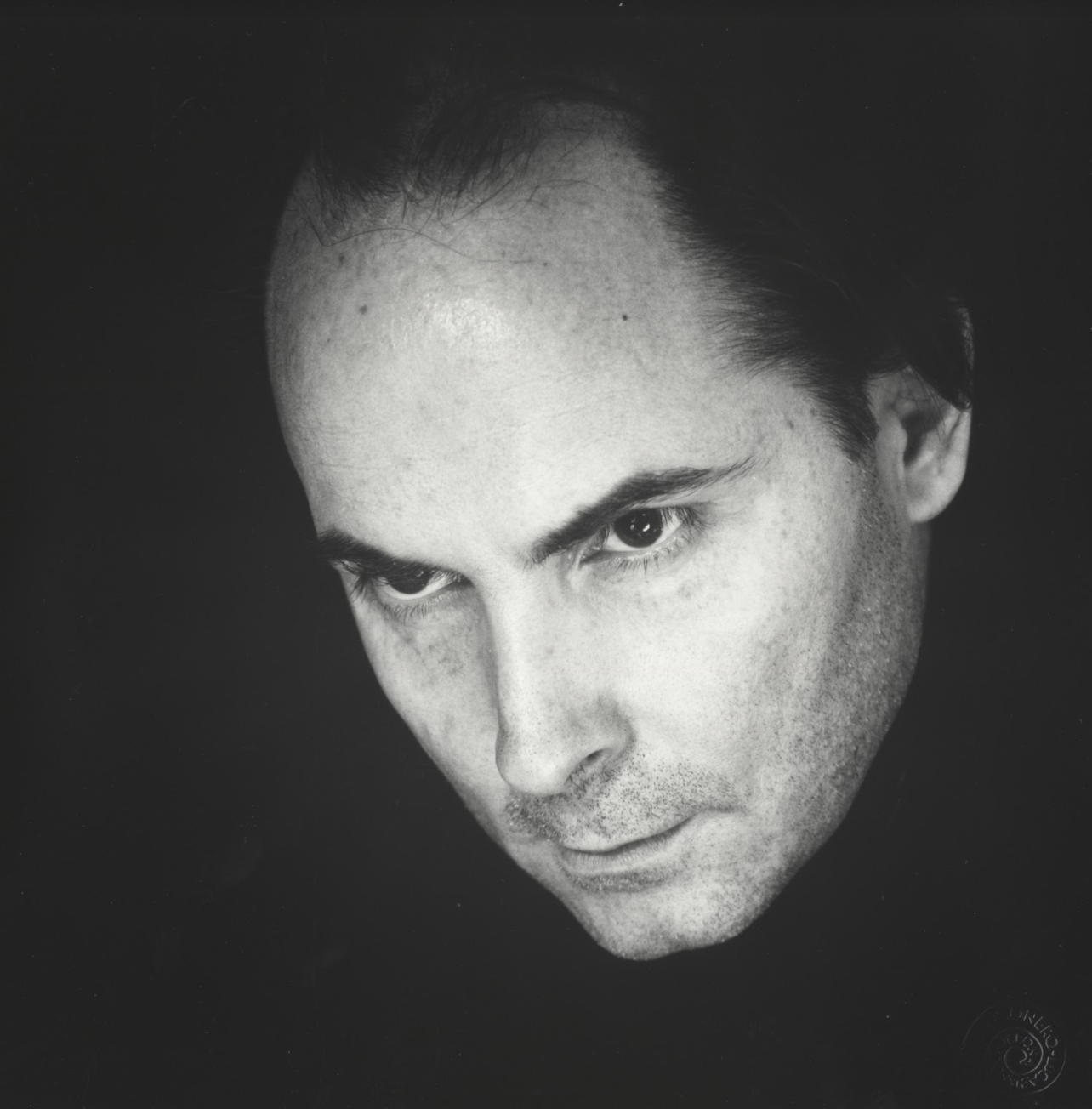
ミケーレ・マンジーニ(イタリア、1967)
私がは創造するのは形象です。
形象とは真実に満ちてはいても知識に落とし込めず、ゆらいで消えるようなイメージに形を与えたものです。形象は古典哲学を踏まえれば「異なる思想」に自らを変換することであり、言葉通りの「印象」と概念を通過することで二つの「半真実」をつなぎとめます。二つとは最大まで抽象化された概念と、偉大なる神話・論理・類推・想像の力です。私の形象は葛藤を内包しています。つまり不安定と他者性を解消もしなければ、解決もせずに認めているのです。
この考えを通したとき、未解決の緊張をそのままにできます。つまり一つの事物の中に多数どころか無限の可能性が存在するのであり、これはまるで「神が想定する多くの形態」の前に立つ悲劇の英雄に開かれた運命のような開放です。そのような恐ろしく、途方もない豊かさが現代人たちの眼前に明らかになるのです。
Michele Manzini (Italy, 1967)
I create figures.
The figure is an attempt at form that compares the fascination of images, which even if filled with truth shimmer and then vanish without changing into knowledge. The figure is the process itself of “another thought,” with respect to that of classical philosophy, of a thought which moves through literary “images” and concepts and holds together the two “half-truths”: the maximum abstraction of the concept and the great power of that which is myth, reason, analogy and image. My figures contain within themselves the conflict, in the sense that they assume within themselves the instability and the otherness without dissolving it, without resolving it.
This knowledge leaves over the charge of these unresolved tensions. Its horizon is one populated by many, by infinite possible forms, open, as destiny was open to the tragic hero before the “many forms which the divine assumes” that are the terrible and stupendous richness that unfolds itself in front of men of modernity.
Disruptions
ディスラプション・断絶
4’55
監督:Felipe Frozza,Ulrike Flämig
振付:Ulrike Flämig
ドイツ 2015
ダンス映画監督たちへのメールインタビュー
A Mail Questionnair to Dance Film Directors
インタビュアー・翻訳:黒田瑞仁
まず最初に、あなたたちについて教えてください。どういう作品を作ってこられましたか?
Rike Flämig : 普段、私は場所との結びつきの強い作品や、劇場やフェスティバル向けのダンス作品を作っています。2016年の春に、私たちは「LAND(土地)」をテーマにした合同展に誘われて写真や映像インスタレーションを出展しています。実はここでもパレスチナや、ドイツ内にかつて引かれていた境界線のことを扱っています。私はひたすら、身体をつかってイメージをつくりあげています。それが舞台上であれ、ショートフィルムや映像インスタレーションの中であれ。公共の場所を使用し、政治的な内容を伴うことが多いです。
Felipe Frozza : 私はドキュメンタリー映画、ビデオアートや写真などの要素の領域横断的な作品をつくります。また非言語コミュニケーションの経験を持っているダンサー、パフォーマー、音楽家やサウンド・アーティストとの共同制作を積極的に行っています。私はスタジオで何かを創出するよりも、存在する現実をきっかけに製作することを好みます。現実には、明りも、音も、ロケーションも全て揃っているのです。そこに何かを加えたり引いたりすれば、すぐに撮影することができます。現実を作品に取り込む場合、観察眼を養うことが必要です。この観察眼のために私とRikeは仕事中に上手くやりとりできるのです。私たちは似た方法を持っていて、政治的関心も近く、編集室では二人とも予想外の映像に触発された物語の切り口に夢中になっています。
撮影場所がパレスチナとあります。正直に言うと、パレスチナとそれがイスラエルとの間に抱える問題については、知ってはいるものの日本で暮らす我々にとっては身近に感じにくい問題です。ドイツではどうなのでしょうか?なぜパレスチナで映画を撮ろうと思ったのですか?
Rike Flämig : 私たちは二人ともベルリンに住んでいるので、越えることのできない壁に分断されていた頃の形跡がよく目に入ってきます。東ドイツで生まれた私にとって壁は当たり前のものでした。それが崩れるのを見ることは強烈な体験だったのです。そのためいま実在している壁と、それがたたずんでいる背景に興味があります。
Felipe Frozza : 8年前にドイツに移住したブラジル人として、なぜか他人事とは思えません。ここにやって来た頃から第二次世界大戦やShoa(ホロコースト)についてドイツ社会が自らの責任について話し合う姿勢に感心していました。私からすると、イスラエルとパレスチナの政治関係について一部の人が情熱的に議論することは、そのことと無関係ではないように思えるのです。何が私をパレスチナについての映画を撮ることに向かわせたかということについては、撮影の前に二度渡航したとき状況がどれほど複雑で難しいかということに気づいたのです。また世界中のあらゆるメディアが扱っています。Rikeといることで、このことをどう扱えばいいか新しい視点が開けたのです。ダンスを通じて、でした。それに気づくことで初めて、取り組むに値する主題だと自分を説得することができました。
ダンサーによる動きは説明的というより、抽象度が高いように感じました。どのように振り付けされているのでしょうか?
Rike Flämig : 動きは完全即興です。その場で出会った刺激、現場で受けた聴覚や視覚からできあがっています。大理石の欠片の感触が私の足を特定の方向に動かしました。もちろん越えてはいけない壁の前に佇むこと自体がとても具体的な動きや感情を喚起させます。トカゲがどう壁を這うかを観察するような単純なことが、創作のインスピレーションになりました。
パレスチナに撮影に行く前に、全体の構想はどの程度あったのですか?具体的なロケーションは決めていましたか?
Rike Flämig + Felipe Frozza : 2014年にパレスチナに向かう時点で、私たちは壁の近くで撮影がしたいと思っていました。ちょうどドイツの壁の崩壊から25年周年という節目の年だったからです。同時にイスラエル占領下のパレスチナでの生活についてももっと知りたいと考えていました。ヘブロンという、壁がその中を貫いていて紛争の影がいたるところに見え隠れする都市にある友人の家に宿泊しました。壁は私たちが寝泊まりした道の行き止まり、すぐ近所にありました。最初はあんなに威圧的に見えたものが、すぐに日常の一部になりました。だから、その目の前で撮影をしようと思えたのです。『ディスラプション・途絶』に登場する二つ目の壁は、ベツレヘム近郊のアイダ難民キャンプにあります。こちらの壁のほうがはるかに大きく、イスラエルを西岸から分断しています。壁沿いに歩くと、大理石工場の残骸を見つけました。そこからどれくらい遠くまで壁が伸びているかを見渡せました。改めてここが撮影に最適の場所だということを実感しました。
兵士に見つかる場面や、子供がネズミを見せてくる場面は意図されたものだったのですか?意図していないとしたら、なぜこれらのカットを完成版に含めようと思ったのでしょうか?
Rike Flämig + Felipe Frozza : 紛争の絶えない場所を選択したので、何かが起きるのではないかと予想していました。ともあれ私たちは、撮影するのに残された時間が短かったことにも、途絶がすぐに姿を現したことにも驚きました。場所は私たちを極限に置き、それをどう扱えばいいかを自覚するところまで追い込みました。私たちは撮った映像をすべて見て、すぐに兵士やネズミを持った子供達が映画の一部になることを悟りました。実際に起きた事件はパレスチナでの日常の感触を創作されたストーリーや「キレイなダンス映画」よりも 、深みを伴って伝えてくれるのです。
パレスチナで作品を作ったのは、ベルリンにもかつて断絶があったからだと以前のインタビューでは伺いました。いまコロナ禍のロックダウンや自粛で社会の状況は大きく変わっていますが、世界中で起きているのはあなた方がこの作品で捉えようとした断絶だと思いますか。それとも別のものでしょうか。
Rike Flämig: それは興味深い質問ですね。コロナ禍は間違いなく私たちの以前の生活との断絶です。これまでとは別の方法で誰かと一緒に過ごすよう、私たちに挑戦的な問いかけをもたらしています。一方でウイルスそのものは、独裁や占領といった種類の断絶とは異なります。そうだとしても私は、コロナによる都市封鎖を経験したベツレヘムの若い男性へのインタビューを聞いた時の衝撃を思い出しました。たしか彼は次のようなことを語っていました。「これは私たちにとっては日常です。こんなことには慣れています。あの瞬間から先、私たちの生活は常に封鎖され、何とかその中で生きてきました。通常の封鎖は占領によるもので、今はその原因がウイルスに変わっただけです。」そこで私は思ったわけです。では果たしてヨルダン川西岸の人々は、自分たちの生活に関する厳しい決断が下されることに対して、より「訓練」されているのだろうかと。また同時に私が気付かされたことは、国民の基本権を制限することは、それがどの国で起こり、原因がウイルス感染症であっても、短期間かつ最低限の措置であるべきだということです。国民の民主的な権利は私たちが過去に勝ち取ったもので、健康かつ健全な生活を続けるためには必要だからです。
Please tell us about yourself, and what kind of pieces you have made in the past.
Rike Flämig : I usually create site specific works and dance performances for theatres and festivals. In Spring 2016 we were invited to hold a collaborative exhibition where we showed photographs and a video installation on the topic of „LAND“ - actually also relating to the realities in Palestine as well as to the former Border within Germany. So for me it´s always about creating images with the body - be it on stage, in a short film or a video installation, often using public space to relate to political context.
Felipe Frozza : My work navigates between documentary film, video art and photography. I like to collaborate with dancers, performance artists, musicians and sound artists because of the expertise they have with non verbal communication. I prefer to depart from real existing circumstances rather than trying to recreate them in a studio. In reality everything is given: light, sound, location. You just need to add or extract something here and there and you´re ready to shoot. When you´re including reality in your work you have to develop a good a sense of observation, but also quick decision and spontaneous reactions. That´s why Rike and I can dialogue well while working together. We have a similar approach. Our political interests are also running parallel and, while in the editing room, we are both also fascinated by the different possibilities of telling a story that comes from such “unexpected” footage.
The film is located in Palestine. To be honest, although we know about Palestine and its conflict with Israel, it is difficult to consider it as a close matter to us living in Japan. Is that also the case in Germany? What were your motives to film a movie in Palestine?
Rike Flämig : As we both live in Berlin we often find traces that remind us our city was once separated by a wall which was impossible to cross. I was born in East Germany and the wall was a given reality for me. It was a strong experience to see it fall. Therefore I´m also interested in the walls which are still existing nowadays and in the contexts where they are embedded.
Felipe Frozza : From the perspective of a Brazilian who migrated to Germany eight years ago, I see it somehow as a close matter. Since the beginning of my time here I have been very impressed with the engagement that the German society discusses its responsibility for the Second World War and the Shoa (Holocaust). For me there´s a link between that and the way some people here passionately argue about the political developments in Israel and Palestine. As for the reason that motivated me to film in Palestine: in the two trips I had done to the region before the shooting I realized how complex and complicated the whole situation is. It has also been extensively documented by all sorts of media outlets from around the world. Being with Rike there opened a new perspective for me on how to touch the matter. Through dance. And that´s when I convinced myself it was worth doing something about the topic.
Moves by the dancer seems to be quite abstract, rather than gesture-like or explanatory. How was it choreographed?
Rike Flämig : The movements are completely improvised, created from impulses taken from the space, sounds and visuals found on the location. The texture of the marble pieces inspired my feet to move in a certain way. Of course, being in front of a wall that cannot be crossed was triggering very specific sensations and movements. But also simple things like just observing a lizard and how he moved along the wall inspired the creation.
Before actually going to Palestine for the filming, how detailed was the blueprint? Did you have specific locations in mind?
Rike Flämig + Felipe Frozza :When we went to Palestine, we knew we wanted to shoot near the wall as it our trip took place in 2014 which marked the jubilee of 25 years after the fall of the wall in Germany. We were also interested in getting to know more about life in Palestine under the Israeli occupation. We stayed at some friends house in Hebron, a city that has a wall inside itself and where the conflict is visible at every corner. The wall was right at the end of the street where we were living, it was our close neighbour. What looked so aggressive at the beginning ended up becoming part of our daily way home and that´s how we got confident to film in front of it. The second piece of wall that you see in “Disruptions” is at the Aida Refugee Camp near Bethlehem. It´s a much bigger wall. It actually divides Israel from the West Bank. Walking alongside the wall we discovered the spot with the leftovers of a marble factory. From there one could see very clearly how far the wall reaches. So it was clear to us again, that that was the perfect place for the shooting.
Were the situation which the dancer is seen by the soldier and where the children shows off a rat, intentional? If not, why did you include the cuts in the final print?
Rike Flämig + Felipe Frozza : As we chose a spot full of conflict on purpose we knew things like this could happen. Nevertheless we were surprised how short time was left for us to film and how soon the disruptions appeared. It also put us in quite extreme situations and brought us to the limit of knowing how to handle it. We watched the entire footage and soon it became clear that the soldier and the kids with the rat had to be part of it. For us this real life incidents tell a lot about the density of daily life in Palestine and give much more insight into those realities than we could have shared with a made up story or a „beautiful dance video.“
In the previous interview, you mentioned Palestine now and Berlin in the past experienced similar disruption. Nowadays, the social situation has changed dramatically due to the lockdown and self-quarantine caused by the corona crisis. Do you think that what is happening around the world is the disruption that you tried to capture in this film? Or is it something totaly different?
Rike Flämig: That’s an interesting question. The Corona Crisis is definitely a disruption to the lives we knew before - and a challenge to find new solutions & to invent new ways of being with each other. The Virus itself brings a very different disruption than the context of a dictatorship or an occupation. Nevertheless It struck me to see in an interview of a young man from Bethlehem after the city experienced a Corona related Lock Down. He said something like: "This is normal for us. We are used to this - that from one moment to another we are locked down and then have to deal & to live on with it. Usually there is Lock Down because of the Occupation - now there is a Lock Down because of a Virus." So this made me wonder, if people in the West Bank might be more „trained“ in dealing with harsh decisions that are taken about the context of their lives. This also makes me aware, that the reduction of our Basic Rights of Citizens - no matter in what country and - even because of a Virus - should only be used very short term and very limited - as our Democratic Rights as Citizens are something we fought for and which need urgently to continue healthy and resilient lives.
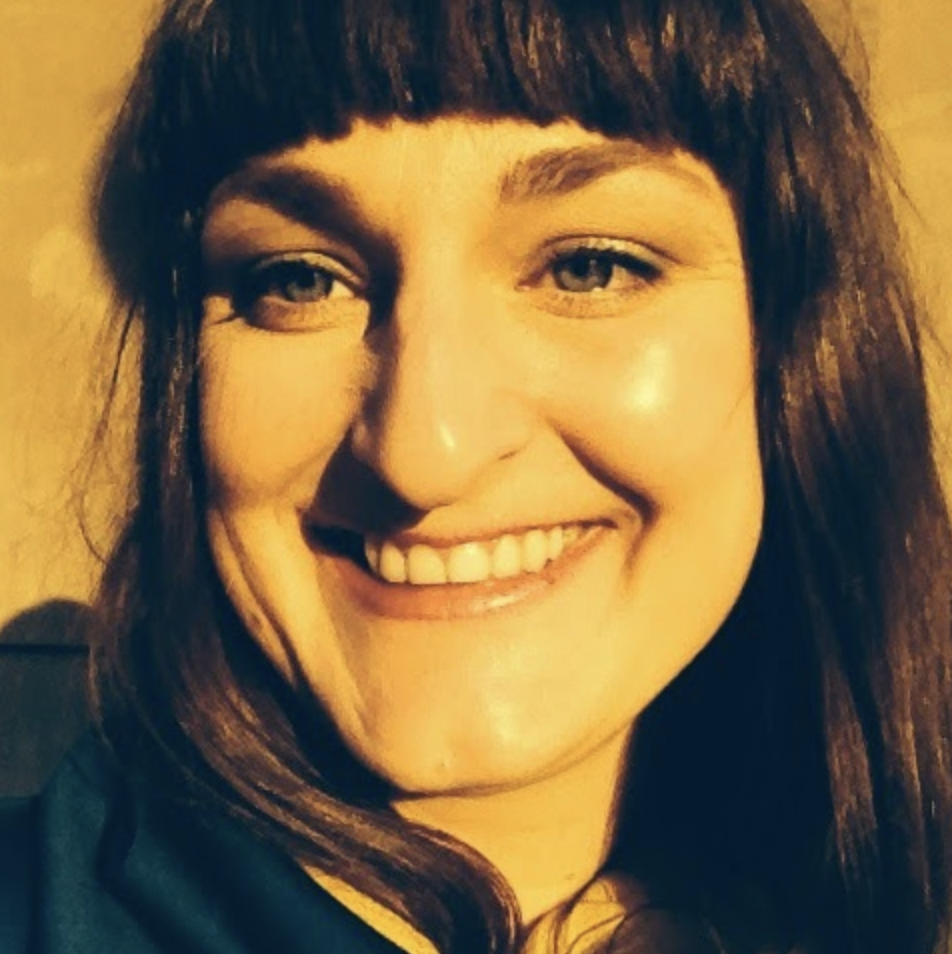
Felipe Frozza is a Brazilian filmmaker based in Berlin. He creates documentary and
fictional works for film and stage productions. Working in the border between documentary and fiction he draws from reality as a starting point and pushes the narratives to a point of surreality and absurdity. Currently he studies camera for film in Berlin and he is graduated in International Relations in Sao Paulo. He showed his works at Festivals in Europe, South America and in the Middle East.
Rike Flämig is a post communist performer and choreographer based in Berlin. Using the body as a resistant sign she moves between performance art and contemporary dance.
She develops documentary theatre productions and site specific works for public space,theatre and film. She studied Performance Art in Hildesheim and Contemporary Dance in Amsterdam and showes her works in Germany, Eastern Europe and in the Middle East.
Felipe Frozza
フェリペ・フローズはベルリン在住、ブラジル人の映像作家。彼は映画や舞台で使われるドキュメンタリーやフィクション作品を製作している。ドキュメンタリーとフィクションの境の領域で活躍する彼は、現実を出発点としながら最後には超現実や不合理に至る物語を描く。サンパウロで国際関係学を修め、現在はベルリンで映画のためにカメラを学ぶ。ヨーロッパ、南アメリカや中東のフェスティバルで作品を発表。
Rike Flämig
リケ・フレーミッヒはベルリン在住、ポスト共産主義のパフォーマー、振付家。身体を抵抗の道具にパフォーマンスアートとコンテンポラリーダンスの間を行き来している。ドキュメンタリーシアターと公共の場や劇場や映像を使ったサイトスペシフィックな作品を自ら企画している。ヒルデスハイムでパフォーマンスアートを、アムステルダムでコンテンポラリーダンスを学んだ後、ドイツ、東欧、中東で作品を発表。
